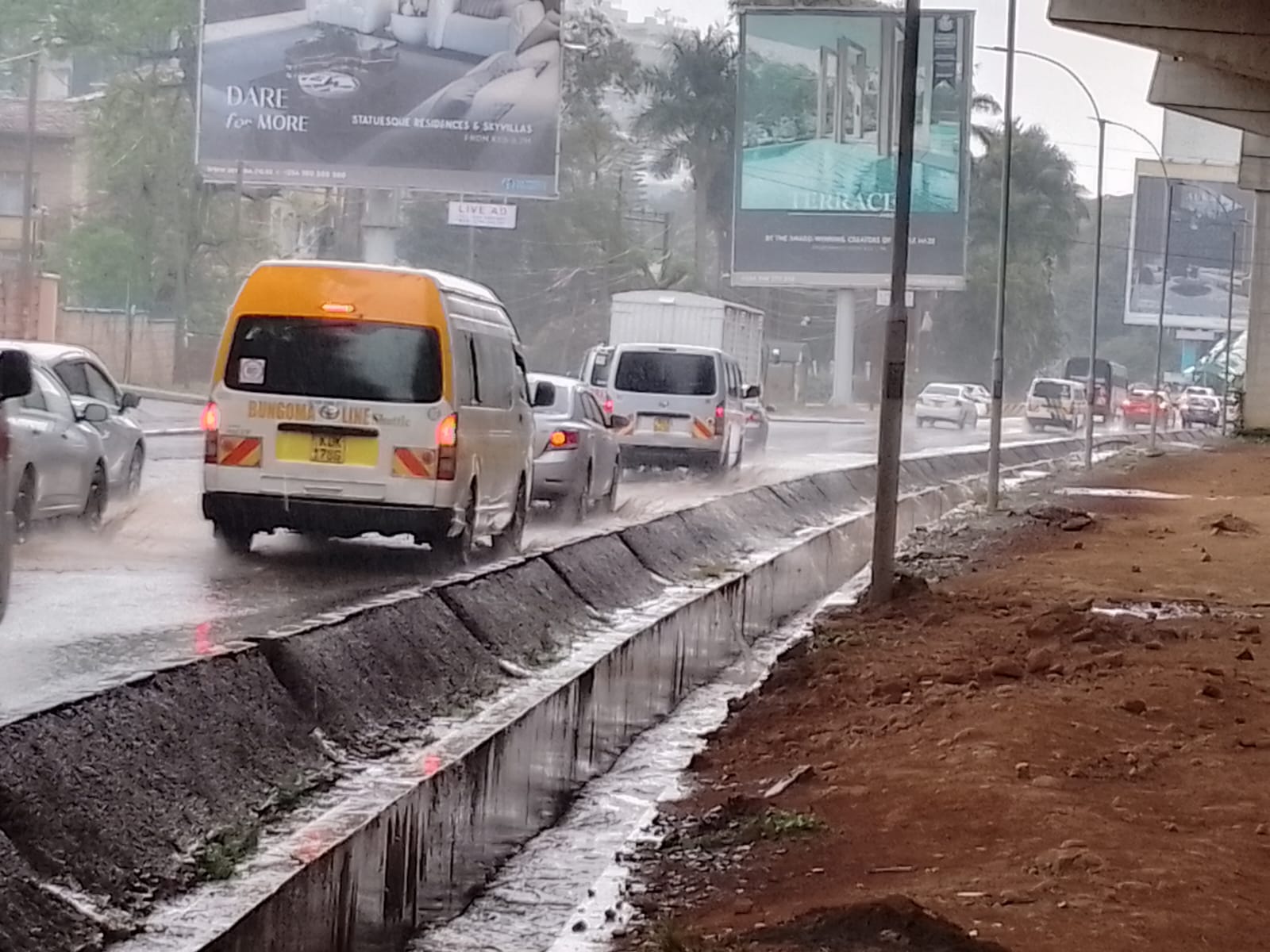- Solar power is cheaper than hydroelectric alternatives, cleaner than fossil fuel–powered pumps, and allows farmers to maintain more consistent crop production.
Salina Chepsat is the chairlady and a founding member of the Endorois Women Community-Based Organization (CBO), established in 2012 in Baringo County. The group, composed exclusively of women, seeks to reduce poverty through table banking and merry-go-round activities.
Chepsat’s neighbourhood, including her group members, has borne the brunt of climate change for several years, losing crops to severe droughts and unpredictable rain patterns.
Farming in Kabasia village, a stony, semi-arid area dominated by toxic Mathenge trees, was never easy. Locals say the trees have poisoned livestock, and their sugary pods have caused dental problems.
 (1).jpg)
Read More
In recent years, shorter rainfall seasons and prolonged droughts across Kenya have further threatened agricultural production, making the adoption of solar-powered irrigation increasingly urgent for farmers’ survival.
Jared Matei, a climate change expert in Nakuru County, explains that reliance on rainfed agriculture poses multiple risks.
“Variability in rainfall affects both planting and harvesting schedules, while extended droughts lead to significant crop losses. On the other hand, excessive rainfall can erode topsoil and reduce soil fertility,” he said.
By 2019, after repeated crop failures, Chepsat and her group decided to take action. They wanted to shift from rainfed cultivation to irrigation farming, but they had no way to pump water.
Determined to find a sustainable solution, the group drafted a proposal to the Small Grants Programme under the United Nations Development Programme.
The following year, they received KSh 2.8 million to set up a small-scale solar-powered irrigation system. With the funding, they acquired a water tank, solar panel, battery, pipes, and excavated three water holes holding more than 10,000 liters.
Chepsat started her own farm in 2020 to boost household income and provide food for her family, initially growing maize and beans entirely reliant on rainfall.
Before adopting solar, she relied on a diesel-powered generator to pump water from a nearby river.
“I used to buy a minimum of three liters of diesel daily for irrigation, with each going for KSh 130 (USD 1). I spent KSh 336 (USD 2.61) daily just to water a small plot for domestic use. It was untenable,” she says.
Carrying water by jerrican from a nearby swamp was exhausting and time-consuming, leaving Chepsat and her group drained before they could even start farm work.
While Chepsat battles drought in Baringo, 113 kilometers away, Peter Wangai confronts similar challenges at Ecko City Farm along the Njoro–Mau Narok road in Nakuru County.
An ecologist by training, Peter started the farm to train individuals interested in horticulture and urban farming. As he noticed a lack of fish supply in nearby markets and limited small-scale training on fish rearing, he ventured into raised fish pond farming.
Supplying water to the ponds consistently posed a major challenge, and with no hydroelectric power on site, he turned to solar energy.
“I chose solar for its reliability, consistency, portability, and ease of installation,” he says. “I got a solar panel and a submersible pump in Nairobi for KSh 15,000 (USD 116). Installation was simple, I didn’t even need a technician.”
The system allowed him to pump water to the ponds and reuse drained water for irrigating crops. With a 250-watt solar panel mounted on the greenhouse, Peter can move water across the farm at any time of the day.
 (1).jpg)
He later connected the panel directly to the pump, eliminating the bulkiness of a battery and making the system easier to use.
Peter’s farm now supports a shoal of 1,024 fish, including 274 catfish and 749 tilapia, which he plans to sell for KSh 300–400 (USD 3–4) each once they reach table size.

Though Peter and Chepsat’s farms are miles apart, both rely on solar energy, which they say offers an affordable, efficient, and reliable source of power for irrigation.
Their experiences reflect a growing trend among Kenyan farmers, who are increasingly turning to solar to reduce costs, protect the environment, and build resilience against climate change.
Solar power is cheaper than hydroelectric alternatives, cleaner than fossil fuel–powered pumps, and allows farmers to maintain more consistent crop production.
Agriculture accounts for a third of Kenya’s GDP and employs over 40% of the population, yet climate change threatens farmers’ yields.
“Climate change impacts have become more prominent recently. It is essential for farmers to implement resilience strategies, such as solar energy systems, to mitigate its effects,” says Matei. Irrigation powered by solar energy allows farmers to cultivate crops year-round, stabilizing incomes while reducing environmental impact.
According to the International Renewable Energy Agency (IRENA), Africa’s capacity for renewable energy is 1,000 times higher than its anticipated electricity requirements by 2040. By that year, the share of renewables in southern and eastern Africa could rise to 63 percent, up from 20 percent in 2016.
Farming techniques that focus on climate resilience, like solar-powered irrigation, hold significant promise for Kenyan farmers facing erratic weather and prolonged dry periods.
Matei said that the government should offer incentives to encourage adoption, including partnerships with solar manufacturers to produce cost-effective panels for farmers and low- or zero-interest financing to support purchase and maintenance.
Outside one of her homes, the diesel generator Chepsat used before installing solar now sits in the shade, gathering dust—a testament to her persistence.
“I keep it as a souvenir to remind me of how far I have come. I have no plan to sell it; I just want to see it here,” Chepsat said.

-1755864575.png)





